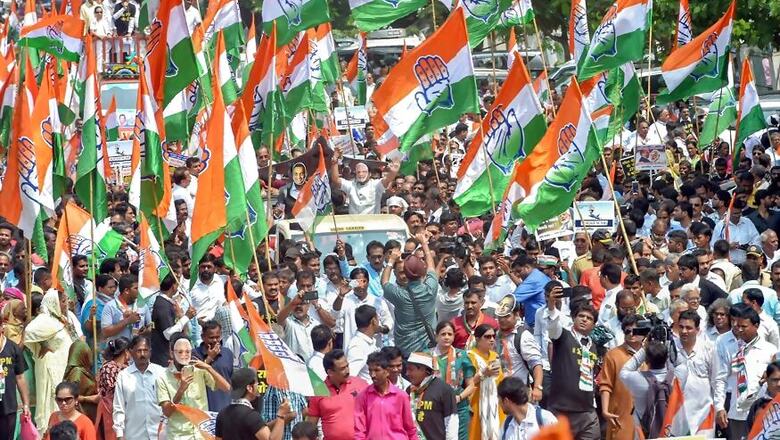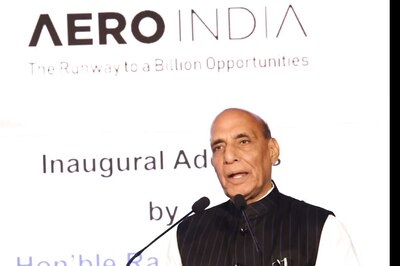
views
Lucknow: As it becomes increasingly clear that Uttar Pradesh, the state with the maximum number of Lok Sabha seats, heads for a triangular fight in the upcoming general elections, the focus has shifted to the ‘Congress factor’.
How will this factor work in the state where 80 seats are at stake? Will it be an advantage for the BJP as it gears up for its biggest electoral challenge against the united opposition of SP-BSP-RLD, or will it benefit the ‘Gathbandhan’? Is the original calculation of a weak Congress just chipping into the BJP’s votebank still relevant or has it changed post Priyanka Gandhi’s mega entry in UP’s political arena and the party’s intention of going big in the state’s electoral battle?
According to political experts, the ‘Congress factor’ could be a double-edged sword. While it may inflict larger damage on the BJP, the party’s resurgence can also be a cause of concern for the ‘Gathbandhan’ on several seats.
To start with, have a look at the 11 seats of the state on which candidates have recently been announced by the Congress. Unnao and Dhaurara make for an interesting study. The Congress has fielded Anu Tandon and Jitin Prasad from the two constituencies. Both won from the same seats in 2009 but lost badly to the BJP in 2014.
An analysis of the 2009 and 2014 election results shows that there was a major vote transfer from the Congress to the BJP in 2014. In 2009, the Congress got over 4.75 lakh votes in Unnao, while the BJP got only 57,000. In 2014, there was a swing and the BJP got 5.18 lakh votes, while the Congress slipped to 1.97 lakh. Similarly in Dhaurara, the Congress got 3.91 lakh votes in 2009, while the BJP managed just 25,000. In 2014, riding on the ‘Modi wave’, the BJP got over 3.60 lakh votes and the Congress lost more than 2 lakh.
However, first in 2009 and then again in 2014, the SP-BSP’s combined vote share in both these constituencies remained almost stable. Keeping in mind the increase in number of voters from 2009 to 2014, in Unnao the SP-BSP together got 3.28 lakh votes in 2009 and the number increased to 4.8 lakh in 2014. Similarly, the alliance as a bloc got 3.9 lakh votes in 2009 and this increased to 4.68 lakh in 2014 even during the ‘Modi wave’.
With this data in consideration, the ‘Congress factor’ can well be a bigger cause of concern for the BJP, in these two constituencies and many others, where voting has been on a similar pattern.
In constituencies such as Farukhabad, Akbarpur, Jalaun and Kushinaga, where the Congress has also announced its candidates, a study of 2009 and 2014 elections shows that there has been a major shift of votes between the Congress and the BJP. In all these constituencies, the SP-BSP combined vote has almost been similar in percentage.
Naturally, it is this voting pattern that gives both Akhilesh Yadav and Mayawati a reason to believe that the Congress will largely play a “vote katua” for the BJP. This despite the fact that the combined vote share of the ‘Gathbandhan’ on these seats had been slightly less than the BJP.
Samajwadi party MLC Udayveer Singh says “This slight lacking of alliance vote share as compared to the BJP in 2014 elections is not a cause of concern. 2014 was a result of the ‘Modi wave’ where there was large-scale movement of voters towards the BJP. In 2019, ground realities have changed. There is a new caste consolidation of Dalits, backwards and the minorities on ground. The Congress as a third front will actually help us by making dents into the BJP’s natural vote base.”
Insiders in the BJP convey satisfaction about the triangular fight even though they dismiss the opposition challenge on record. The party’s state spokesperson, Hero Vajpayee, says: “Our party is firmly in the saddle. We are targeting 50 per cent plus vote share, hence a united opposition or the Priyanka Gandhi factor will have no impact. Opposition will be fighting each other for space in the remaining 50 per cent of votes.”
The BJP’s optimism can well be true on seats such as Saharanpur, where a triangular fight is clearly in its favour. In Saharanpur, both BJP and Congress polled less than a lakh votes respectively in 2009, while the SP-BSP alliance secured more than six lakh votes. In 2014, the BJP and Congress did unexpectedly well — both securing over four lakh votes. The alliance performed miserably, securing less than three lakh votes. Clearly, in constituencies like these, a divided opposition can be an advantage for the BJP like in 2014.
No doubt then the ‘Congress factor’ is a phenomenon that can throw up interesting possibilities in Uttar Pradesh. Lucknow-based political analyst and assistant professor of sociology Dr Pradeep Sharma says: “Data analysis shows that the ‘Congress factor’ should primarily be a major cause of concern for the BJP and to some extent for the alliance on a select few seats. This on the basis of the fact that Congress has just around 30 seats where it actually has some base in UP, that is its mission 30 seats.”
However, a lot will also depend on other crucial factors such as the Priyanka Gandhi aspect, performance of SP rebel Shivpal Yadav’s political outfit and most importantly, if the SP-BSP are able to ensure smooth transfer of votes to each other, Sharma adds further.




















Comments
0 comment